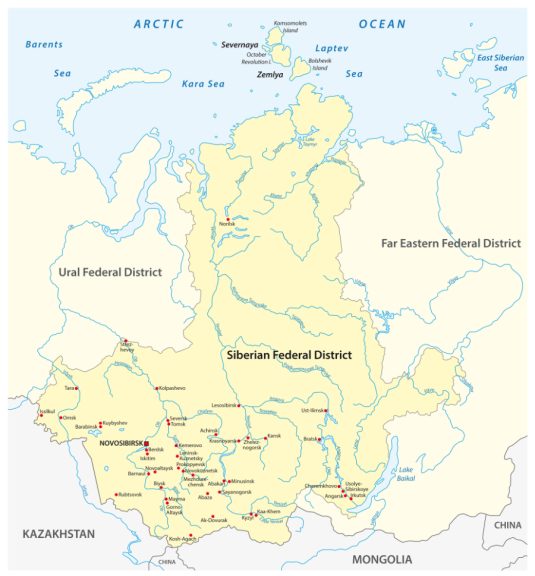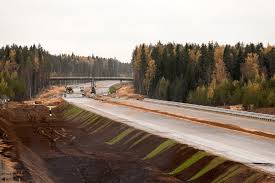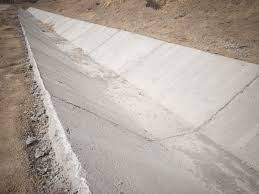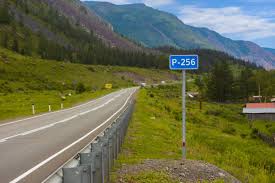The development of ‘territorial organisation’ of the Russian economy is one of the main goals of the new ‘Strategy for the Spatial Development of Russia 2026-2036’, with the Siberian Federal District to play a significant role in terms of Russia’s connectivity to the Far East, the Arctic, and European Russia. However, to allow Siberia to realise its economic and investment potential, it needs to modernise the existing transport infrastructure, and in particular, the Siberian road and highway network.
The Siberian Federal District, with an area of 4.3 million square kilometres, occupies 25% of Russia’s total land mass, with a population of 16.4 million people (11.3% of Russia’s total) It consists of 10 regions: the Altai Republic, Tyva, Khakassia, the Krasnoyarsk Territory, the Irkutsk Region, the Kemerovo Region, Kuzbass, the Novosibirsk Region, the Omsk Region, and the Tomsk Region. The Siberian Federal District makes a significant contribution to the Russian economy, providing over 10% of Russia’s GDP.
Siberian Reserves

This is because Siberia contains 80% of Russia’s total coal reserves, 40% of oil, gas, and a large proportion of precious and non-ferrous metals, and rare earths. This means that the economy of most of the Siberian Federal District is focused specifically on the extraction and processing of minerals, the development of large-scale chemicals, and the electric power industry, which services not just Siberia but other Russian regions.
Poor Infrastructure

According to Rosavtodor (Russia’s Federal Road Agency) 2023 data, the Siberian Federal District has 225,300 km of roads, of which 7,200 km are of federal significance; 82,500 km are of regional or inter-municipal significance; and 135,600 km are local use.
A particular feature of Siberia’s road infrastructure is a low proportion of federal highways, accounting for just 3% of the national total. Most of these are regional and municipal in nature and serve for inter-regional transportation or for logistics between objects of other types of transport, railways, and ports.
The most developed route is the highway system in Transbaikalia, the Krasnoyarsk Territory, and the Irkutsk Regions, although again the density of tarmacked and paved roads is low, at just 28 km per 1,000 square kilometres of territory. Within the regions, the Altai, Trans-Baikal Territories, and the Omsk Region are the most affluent, but the Krasnoyarsk region lags behind – primarily due to its large, yet sparsely populated territories in the Far North.
These poorly developed areas north of Krasnoyarsk, including the Turukhansky, Evenki, Taimyr and Dolgano-Nenetsky districts, do not possess year-round operational highways. Winter trucks, which operate during the five-month long winter period, play a significant role in the transportation of goods to individual settlements in the northern region.
This means that the main problems of Siberia’s road network are the underdeveloped transport corridors between the regions, the low density of highways, the lack of bypass highways for transit transport out of large cities, and the remoteness of numerous Siberian towns and villages from major transport hubs and product sales markets.
The deep economic and remote geographical location of Siberia, right in the centre of Russia, yet a great distance from the ice-free oceans, and key domestic and global markets also means an increased level of local transport costs. In general, this is the constraining factor of the socio-economic development of northern Siberia – transport overheads are too high to justify a commercial return on investment. Which is in turn why the State needs to step in to provide development assistance.
Difficult Territory

Siberia also accounts for four of Russia’s five road-climatic zones:
- Permafrost (subject to significant temperature changes between freezing and wet, making construction unstable)
- Excessive soil moisture (swamps and bogs)
- Significant soil moisture in some years (flooding)
- Insufficient soil moisture (rock)
The Permafrost regions are located within 13 Siberian administrative divisions: the Altai Republic and Khakassia, the Altai Territory, the Krasnoyarsk Territory, the Kemerovo, Novosibirsk, Omsk, and Tomsk regions, in addition to Tyva, Krasnoyarsk, and Irkutsk, as well as numerous territories in the Far North and the Russian Far East. All these territories have natural and climatic features that negatively affect the construction of highways and their maintenance.
A serious issue is the significant fluctuation in seasonal and daily temperatures, which leads to changes in the physical and mechanical properties of these region’s roads. Various deformations and cracks disrupt the integrity of the entire road structure, and they quickly deteriorate.
In addition to these daily and seasonal variations are heavy rains and spring floods, which destroy the earth’s surface, creating natural subsidence, landslide, heaving, and other disruptive processes.
Another feature is the strong wind load, which in summer leads to increased formation of potholes and potholes, and in winter, snow drifts and crossings, which can cause blockages lasting for several days before machinery can be positioned to remove them. In the Siberia and Far Eastern northern zones, frequent causes of roadway destruction are also caused by underestimating the extent of the permafrost variables, resulting in deep water subsidence and other deformations of the roadway caused by the repeated freeze/thaw aspects of the weather. But even in such conditions, Siberia still needs highways.

Siberian Road Construction Technology

The main transport arteries in the Siberian Federal District were built in the middle of the last century – over 125 years ago – to meet the then existing loads and tasks. The construction was mainly carried out by mining companies to develop deposits and establish road transport links between settlements in the regions of their presence.
As construction techniques developed, precast reinforced concrete road slabs were initially used, however these did not become a viable solution, as construction teams turned to asphalt concrete. For example, the R-255 Siberia highway connecting Novosibirsk and Irkutsk, extending for 1,860 km was originally built in asphalt-concrete construction. (To put that in perspective, this is an equivalent distance from New York to Miami).
However, due to the difficult hydrogeological and climatic conditions of the area, the use of rigid road, cement concrete and mineral binders are now used in the construction of road coverings and bases. This construction is carried out by concrete pavers using rail moulds. But there is also a disconnect – while the design capacity of cement plants in Siberia, the Trans-Baikal Territory, and Buryatia reaches 12 million tonnes – they are underutilised.

Experimental sections of roads with reinforced soil bases were also built in the Omsk, Novosibirsk, Irkutsk and Krasnoyarsk. Roads were mainly built from local materials, much less often, higher categories which again led to shorter road lifespans. Later, other technologies were developed for Siberia and the Far North regions, such as concrete combined with local materials reinforced with mineral binders, when crushed-mastic asphalt concrete based on polymer-bitumen binders is applied in a thin layer to strong concrete bases. Crucially, with a proper drainage system also built alongside, such roads can be operated for a very long time, updating only the surface layer as necessary. Chemical, deep, and planar stabilisation technologies, as well as various geosynthetic materials, have been developed to strengthen weak soils. This has proven to be effective – effective road drainage, while not the most exciting topic – is key.
The Siberian Federal District Highways

Siberia’s existing highways include:
- R-254 Chelyabinsk – Kurgan – Omsk – Novosibirsk
- R-255 Novosibirsk – Kemerovo – Krasnoyarsk – Irkutsk
- R-256 Novosibirsk – Barnaul – Gorno-Altaysk (border with Mongolia)
- R-257 Krasnoyarsk – Abakan – Kyzy – Chadan – Khandagaity (border with Mongolia)
- R-258 Baikal – Irkutsk – Ulan-Ude – Chita
- A-320 Omsk – Cherlak (border with Kazakhstan)
- A-321 Barnaul – Pavlovsk (border with Kazakhstan)
- A-322 Barnaul – Rubtsovsk (border with Kazakhstan)
- A-331 Vilyu – Tulun – Bratsk – Ust-Kut – Mirny – Yakutsk
- P-402 Tyumen – Ishim – Omsk
These networks are serviced by different government departments subordinate to Rosavtodor, based on regional territorial definitions, whereas it may be pertinent to introduce an overall coordinating body to better manage and plan for an overall Siberian road system. The highways listed above have a total combined length of 5,315km. To put that into context, that is roughly the equivalent of driving around the entire Los Angeles City region four times, or equivalent to the circumference of Spain.
Upcoming Siberian Road Plans & Financing

The development of the Siberian Federal District are defined in the Strategy of Socio-economic Development of the Siberian Federal District until 2035, which includes over 150 measures devoted to transport infrastructure. According to Rosavtodor, in 2025, federal support to the Siberian Federal District for the period 2025-2028 will be increased 1.4 times and reach ₽133.3 billion (US$1.64 billion). Most of this has been allocated to bring the regional network up to standard, rather than expanding the network.
However, the road construction plan 2025-2030 provides for the implementation of 6 new federal roads, in addition to 15 smaller roads smaller towns and villages.
The primary task is the preservation and upgrading of the Siberian road network. This includes the repairing of deformations, re-construction where needed of the road base, and drainage installation, and the strengthening of areas subject to permafrost.
There are also more capital-intensive projects, including the upgrading of the busiest sections from two to four or more lanes. Another task is to upgrade structures such as bridges, access roads and other support installations. 640 such facilities (13.8% of the Russian total) are in urgent need of repair.
Specific Siberian Road Upgrades

The R-255 highway extends for 1,995 km. It passes through Novosibirsk, Tomsk, Kemerovo, Irkutsk and Krasnoyarsk and is a formal extension to the east of the R-254 Irtysh and R-400 highways, together forming part of the increasingly important AH-6 Russia – Asian highway network. It also crosses the Tom, Kiya, Chulym, Yenisei, Kan, Uda, Oka, and Irkut rivers, and bypasses multiple smaller regional towns and villages. These require access routes to be put into place to towns such as Kansk, Usolya-Sibirsky, Telma, Kemerovo and Achinsk amongst others.
One of the largest projects is the Novosibirsk Eastern Bypass. In July 2025, the first section, extending 12.4 km, was opened to traffic. The total length of the Eastern Bypass will be about 84 km, and will connect the R-254, R-255, and R-256 highways as well as Gusinobrodskoe and Southern Transit routes. The Eastern bypass will reduce the traffic load at the entrance to the city, where up to 70,000 cars pass per day, and will also increase transport accessibility in several districts at Novosibirsk and Koltsovo. There are four stages in total in the Eastern Bypass of Novosibirsk. In addition, repairs and major repairs are underway on several highway sections in Irkutsk, Kemerovo and Krasnoyarsk.
The R-256, with a length of over 1,100 km, connects three Siberian regions, the Novosibirsk Region, the Altai Territory, and the Altai Republic, and connects Western Siberia with Mongolia and China. The highway is considered very beautiful and remains a popular tourist route. System modernisation is currently underway. It is being expanded from two to four lanes in numerous sections. Another 22 km of road are to be completed by 2030.
Modernisation of the R-256 highway in the Altai Republic is also underway. Road upgrades cover more than 40 km at the entrance to Lake Teletskoye. The main R-256 highway is also being modernised in this region, and the reconstruction of the route in the Maiminsky district is currently being completed. Currently, the road runs in cramped conditions, including through settlements located between the river and the mountains. The new segment will go to the left of the existing road and connect with Souzga, Cheremshanka, and Manzherok. The road will be upgraded to four-lanes to Ust-Sema and include access roads to Maima.
The R-258 is the only Russian highway that leads to Lake Baikal. 50 years ago, this region could only be reached by train. Construction of a complete highway began in the 1970s, and it currently extends for 1,081 km, running through Irkutsk, Buryatia, and the Trans-Baikal Territory, connecting their regional centres. This highway also has a huge tourist-use and development potential.
This year, the R-258 highway has been upgraded to provide better access to Vydrino and Tankhoy in the Kabansky district of Buryatia.
The most capital-intensive project of the 2025-2030 road plan is the construction of the Omsk Northern Bypass, which is costing ₽60.9 billion (US$750 million). This is a 65 km highway, with four lanes in each direction. The project includes the construction of two bridges over the Irtysh and the Om Rivers, 19 overpasses, and five transport interchanges. The projected traffic intensity in 2027 is 16,500 vehicles per day. The new road will reduce the mileage of transit transport along the Tyumen-Novosibirsk route, bypassing Omsk by more than 20 km and will develop the logistics potential of the entire region.
Siberian investment opportunities await in the real estate and service sectors, and especially where the numerous routes being upgraded or added interconnect with other towns.
Further Reading
Western Siberian River Traffic Growing 20-25% As Russia’s River Logistics Boom






